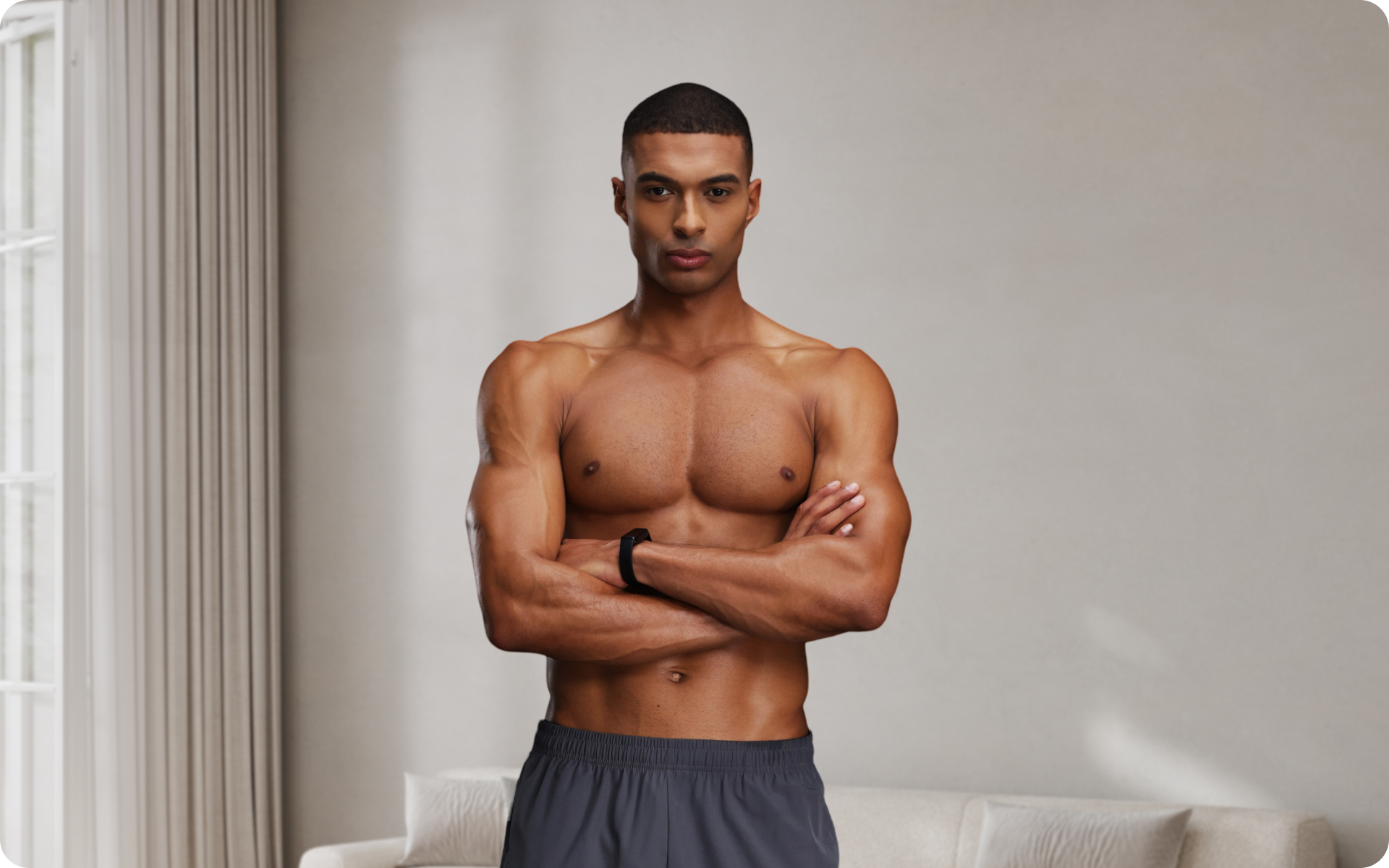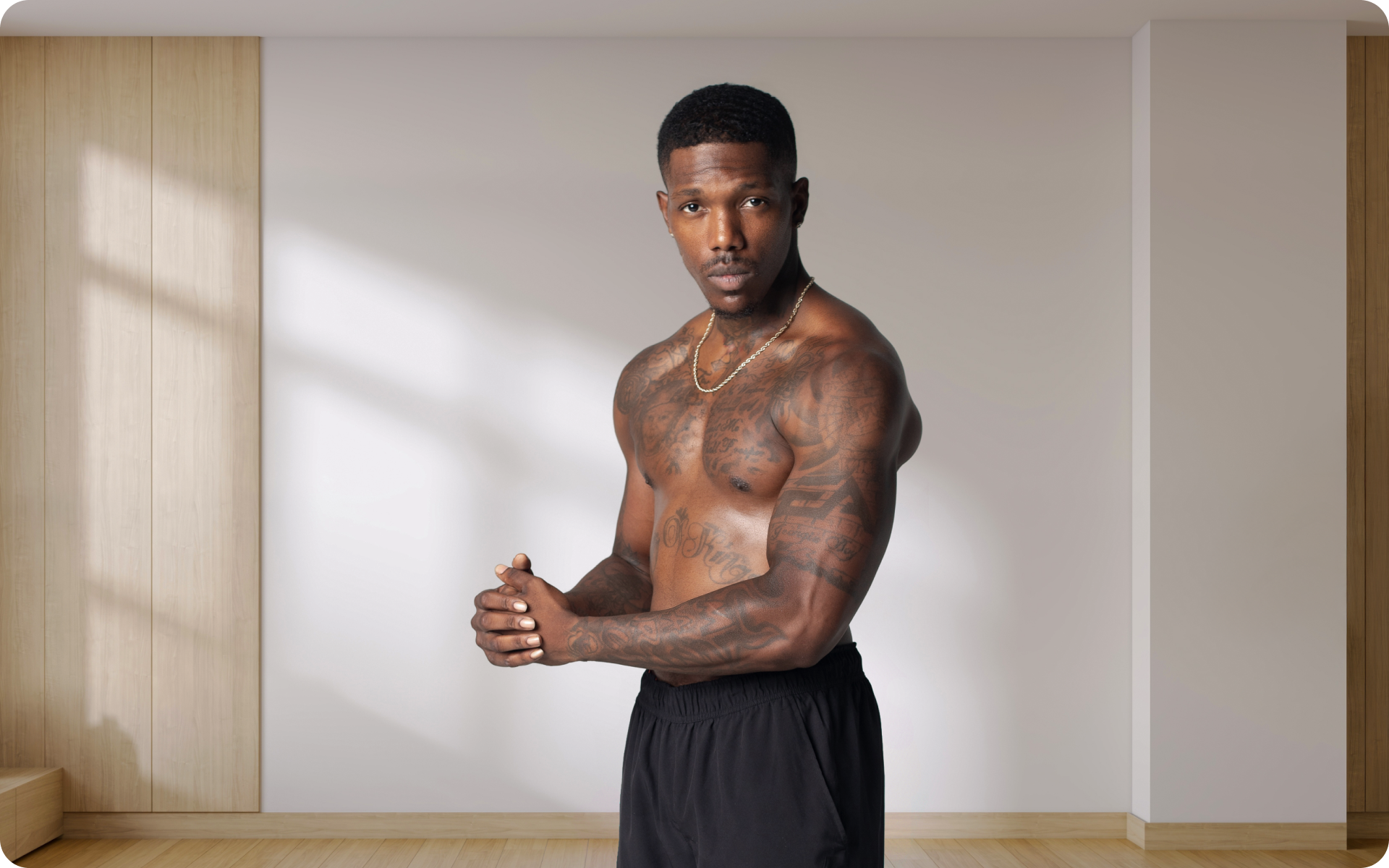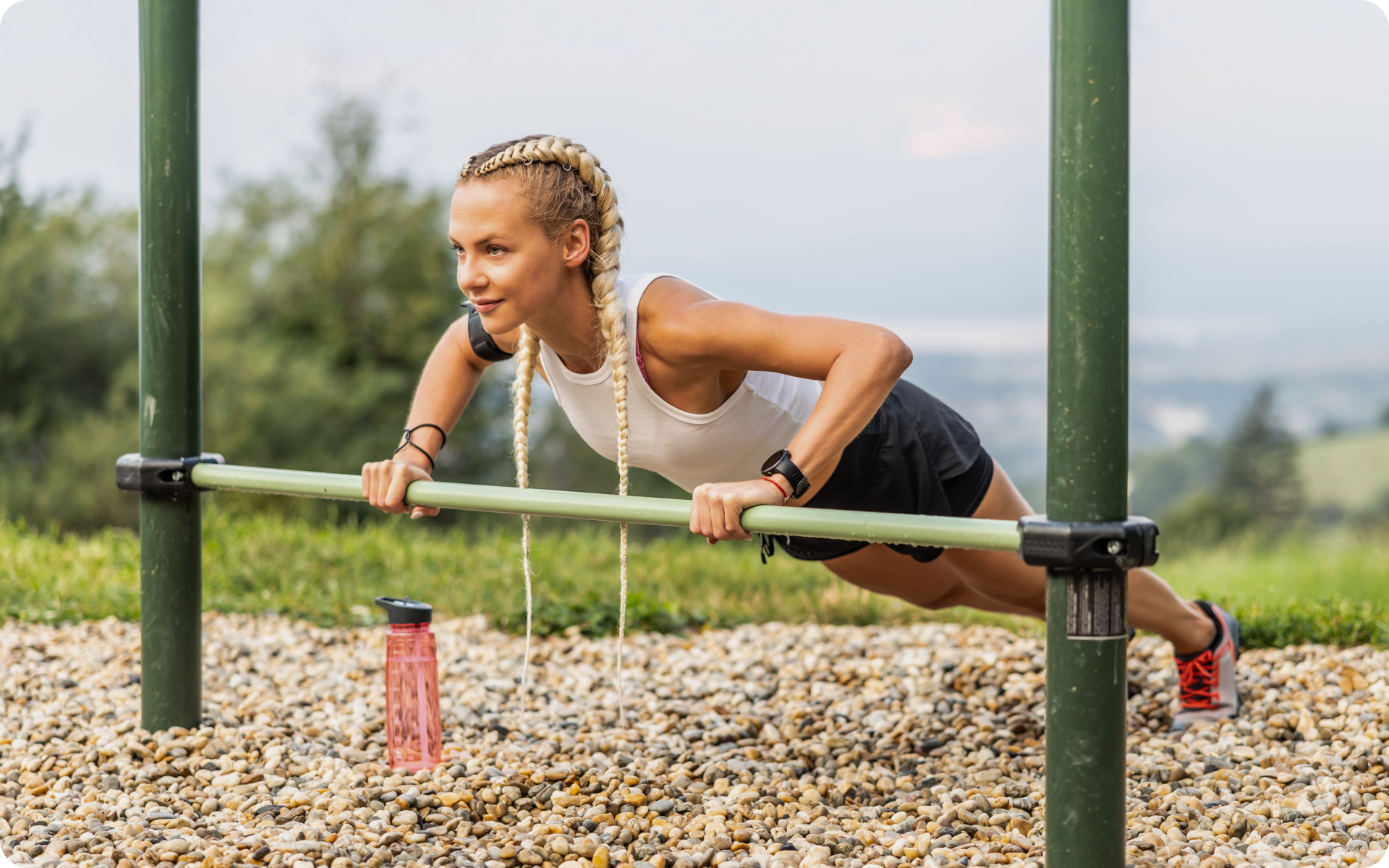When you’re new to fitness, everything seems a bit overwhelming. Should you be doing aerobic or anaerobic exercises? How much weight should you lift? Is running the best thing for your body? What are the recommendations for stretching? All of these questions can be answered with one simple answer: calisthenics. Calisthenics is an exercise that utilizes your body weight and gravity as resistance to build strength and endurance (4). This makes it the perfect workout plan for beginners since you don’t need equipment or a gym membership to get started. It’s a combination of both aerobic and anaerobic exercises, and it’s a great way to get fit fast!
However, it’s not always easy to know what exercises to do and how often. To make it easier for beginners, here are 7 simple steps to the perfect calisthenics workout plan:
Step 1 – Decide If Calisthenics Is Right For You
One of the first steps to take when beginning calisthenics is to decide if it is right for you. Many people find that they enjoy the structure and discipline of regimented exercises, while others prefer a more flexible approach.
If you are looking for an intense workout that requires strength, commitment, and dedication then calisthenics might be for you. However, if your fitness goals are more relaxed and flexible, then alternative exercises or activities may be better suited to your needs.
Make sure that you are physically capable of performing calisthenics exercises. It’s best to consult with a physician prior to beginning any new fitness regimen and make sure that you have clearance from them before starting.
Some calisthenics exercises can be pretty demanding and may require a certain level of physical fitness before attempting.
Educate yourself on the different types of calisthenics exercises and decide which areas you would like to focus on. Briefly, we can divide calisthenics into three main categories: bodyweight exercises, bar-based exercises, and gymnastic movements.
All of them involve using your own body weight to perform exercises without the use of weights or machines. The type of exercise you do depends on your fitness goals and the equipment (or lack thereof) that is available to you.
Bodyweight exercises are great for building overall strength and conditioning, bar-based exercises work well for targeting upper body muscles and gymnastic movements are excellent for developing mobility, balance, and coordination.
Beginners are best served to start with bodyweight exercises as they are the most accessible and typically require less technical skill to master. Once you have become more proficient, then you can begin to incorporate more advanced exercises like bar-based and gymnastic movements.
Read More: What Does Calisthenics Do To Your Body: A Blow-By-Blow Explanation
Step 2 – Assess Your Current Fitness Level
Before you begin your workout plan, it’s important to assess your current fitness level. This will help you determine which exercises are appropriate for your ability and what level of intensity you should be working at.
Start by rating the following areas on a scale of 1-10 (10 being the highest):
- Strength: __________
- Endurance: ___________
- Mobility: ___________
- Flexibility: ___________
- Balance: ___________
- Coordination: ___________
To help you, we’ll briefly define what each of these terms means:
- Strength: How much weight can you lift?
- Endurance: How long can you sustain an exercise?
- Mobility: How much range of motion do you have in your joints?
- Flexibility: How flexible are your muscles and tendons?
- Balance: How well can you maintain control in an unstable environment?
- Coordination: How well do you move your body in a synchronized manner?
Not sure how to gauge your fitness level? Here are some ideas you can use to determine whether you have a base level:
- Strength – Can you do at least 5-10 reps of a basic bodyweight exercise like push ups, squats, or pull-ups?
- Endurance – Can you do 30 minutes of moderate exercise without becoming overly fatigued?
- Mobility – Can you move through a full range of motion in all your joints (attempting a yoga pose is a good way to test this)?
- Flexibility – Can you touch your toes while standing?
- Balance – Can you maintain control while standing on one foot?
- Coordination – Can you move your arms and legs in a fluid, coordinated manner (try a basic dance step or martial arts move)?
A good approach is to start with exercises at your current ability level, then gradually increase the difficulty as you become more comfortable. This will allow you to progress at a steady rate and reduce the risk of injury.
Step 3 – Choose Appropriate Exercises And Create A Program
Now that you have assessed your current fitness level, it’s time to choose the appropriate exercises and create a program.
Start by making a list of the body parts you want to target with your routine (for example, chest, back, arms, legs, etc.). Then look up exercises that focus on those muscle groups.
Make sure to select exercises that are at your current ability level and gradually increase the difficulty as you become stronger and more skilled.
If you struggle to even flirt with the idea of giving up your favorite foods or working out till your legs give way – BetterMe app is here to breathe a fresh perspective into the way you view the weight loss process! Check out the app and experience the fun side of fitness and dieting with BetterMe!
We recommend the following exercises because they can be modified for any fitness level and are appropriate for both beginner and experienced exercisers:
Squats (Modifications – Chair Squats, Resistance Band Squats, Wall Squats)
The squat is a compound movement that targets the legs, glutes, and core. It’s a great exercise for building strength and power. It can be difficult for beginners to achieve the depth of the traditional squat, so here’s an alternate exercise you can do with a chair:
- Start by standing in front of a chair with your feet hip-width apart.
- Reach down and sit back on the chair, keeping your back straight and your feet flat on the floor.
- Press through your heels to stand up and repeat.
Or with a resistance band:
- Drape the resistance band over a pullup bar.
- Place your feet shoulder-width apart and securely grip the band with both hands.
- Squat down slowly and then stand back up, squeezing your glutes as you stand.
- Release the band and repeat.
Over time, you’ll realize that you’re able to do more reps and eventually transition to the traditional squat. To advance, you can add weight such as a medicine ball or kettlebell.
Push-Ups (Modifications – Wall Push-Ups, Incline Push-Ups, Decline Push-Ups)
The push-up is a great exercise for building upper body strength and stability. To make it easier for beginners, we suggest starting with wall push-ups:
- Start in a standing position facing the wall.
- Place your hands on the wall slightly wider than shoulder-width apart.
- Bend your arms and lower yourself towards the wall until your nose and forehead touch the wall.
- Press off the wall and straighten your arms to return to a standing position.
Over time, you can progress to incline or decline push-ups, which will increase the difficulty. You can also add weights such as dumbbells for additional resistance.
Plank (Modifications – Kneeling Plank, Single-Leg Plank, Stability Ball Plank)
The plank is an excellent exercise for strengthening your core. For beginners, try a kneeling plank to get comfortable with the movement before progressing to the full plank:
- Get into a pushup position but with your knees on the floor and feet off the ground.
- Engage your core and squeeze your glutes to maintain a straight line from head to toe.
- Hold the position for 10-30 seconds (depending on your comfort level) and then release.
Lunge (Modifications – Reverse Lunges, Lateral Lunges, Alternating Lunges)
The lunge is a great exercise for building strength and stability in your lower body. To keep it simple, start with reverse lunges:
- Start standing with feet hip-width apart.
- Step one leg back and lower yourself into a lunge.
- Keep your front knee and back heel aligned, and core engaged.
- Press through your front heel to stand back up.
- Repeat on the other side.
Plyometric Exercises (Examples – Box Jumps, Single-Leg Hops, Jumping Jacks)
Plyometric exercises are a great way to increase power and explosiveness. To start, choose a box height that is appropriate for your ability level and try some basic box jumps:
- Stand in front of the box with feet hip-width apart.
- Bend your knees and swing your arms back.
- Jump up onto the box with both feet and then step back down.
You can also do single-leg hops or jumping jacks for a more dynamic exercise. As you progress, you can increase the height of the box or add weight to make it more challenging.
Cardio Exercises (Examples – Jump Rope, High Knees, Burpees)
Cardio exercises are an excellent way to increase endurance and improve your overall fitness (2). As part of a calisthenics routine, you can do jump rope, high knees, and burpees. Other options include mountain climbers, skaters, and walking lunges.
Start with 30-45 seconds of each exercise, then increase the intensity and duration as you get stronger. For an extra challenge, add weights to your cardio routine.
Read More: Calisthenics Vs Weights: Which Road Should You Go Down?
Step 4 – Set Appropriate Timing
Once you have an idea of what exercises to include in your routine, it’s important to plan the timing and duration for each exercise. A good guideline is to start with 30-45 seconds of each exercise, then gradually increase the duration as you get stronger.
Aim for 30 seconds of rest between each exercise and 45-60 seconds of rest between sets. If you’re doing multiple sets, take 3-5 minutes of rest in between them.
Step 5 – Set Up A Warm Up Routine
Any good workout must always start with a warm-up routine that serves three important purposes (5):
- It increases your heart rate, body temperature, and blood flow in preparation for exercise.
- It helps you to become more aware of your body and movements.
- It helps to reduce the risk of any potential injuries from exercise.
A good warm-up routine should consist of some light cardio exercises, such as walking or jogging in place, jumping jacks, and arm circles. It must also include joint mobilization exercises such as arm and ankle rotations, hip circles, and shoulder rolls.
You may also add some dynamic stretching exercises as part of your warm-up routine (1).
Step 6 – Track Your Progress
As a beginner, you need a reasonable understanding of your body and its limitations. You also need to know when to push yourself and when to take it easy. This is why tracking your progress is essential for your calisthenics routine.
A common mistake is to use measures such as the scale to measure your progress.
Instead, track the number of reps you can do in a certain exercise, the amount of time it takes you to complete a set or the amount of weight you can lift. These are more likely to give you accurate results and will help you chart your progress over time.
They are also less likely to demotivate you, unlike methods such as scales.
Skill progression is an equally important measure when it comes to calisthenics. Take a skill like a handstand, for example. You can track your progress in this skill by recording the amount of time you can hold a handstand or the number of consecutive push-ups you can do in a handstand position.
By tracking your progress, you will be able to identify areas of improvement and adjust your calisthenics routine accordingly. This will ensure that you are always making progress and taking your fitness to the next level.
Whether you’re a workout beast or just a beginner making your first foray into the world of fitness and dieting – BetterMe has a lot to offer to both newbies and experts! Install the app and experience the versatility first-hand!
Step 7 – Listen To Your Body
You should always listen to your body when doing calisthenics. If you start to feel any pain or discomfort, stop immediately and adjust your routine. Injuries can easily occur if you push yourself too hard or do exercises incorrectly (3).
Excessive soreness that persists for more than a few days is also an indicator that you are overdoing it and may need to adjust your routine.
Conclusion
Calisthenics is a great way to build strength and fitness without any equipment. Start with basic bodyweight exercises such as squats, push-ups, planks, lunges, and plyometrics.
As you get more comfortable with the movements, you can add weights or increase your reps to challenge yourself. With regular practice and dedication, you can make great progress with calisthenics.
DISCLAIMER:
This article is intended for general informational purposes only and does not serve to address individual circumstances. It is not a substitute for professional advice or help and should not be relied on for making any kind of decision-making. Any action taken as a direct or indirect result of the information in this article is entirely at your own risk and is your sole responsibility.
BetterMe, its content staff, and its medical advisors accept no responsibility for inaccuracies, errors, misstatements, inconsistencies, or omissions and specifically disclaim any liability, loss or risk, personal, professional or otherwise, which may be incurred as a consequence, directly or indirectly, of the use and/or application of any content.
You should always seek the advice of your physician or other qualified health provider with any questions you may have regarding a medical condition or your specific situation. Never disregard professional medical advice or delay seeking it because of BetterMe content. If you suspect or think you may have a medical emergency, call your doctor.
SOURCES:
- Acute effects of dynamic stretching, static stretching, and light aerobic activity on muscular performance in women (2009, pubmed.ncbi.nlm.nih.gov)
- Aerobic exercise and endurance: improving fitness for health benefits (2003, pubmed.ncbi.nlm.nih.gov)
- Overuse injury: How to prevent training injuries (2021, mayoclinic.org)
- The effects of a calisthenics training intervention on posture, strength and body composition (2017, researchgate.net)
- Warm-Up Strategies for Sport and Exercise: Mechanisms and Applications (2015, pubmed.ncbi.nlm.nih.gov)












